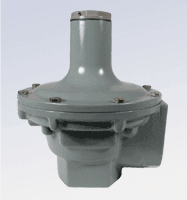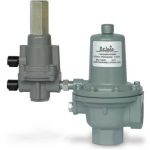Back Pressure Relief Valve
A recent product offering prompted a customer’s question, “What is the difference between a relief valve and a back pressure regulator, and which do I need?” With the entry of a new product offering, we also had to explain the back pressure relief valve.
What’s the difference between a relief valve and a back pressure regulator?
The relief valve and backpressure regulator serve as pressure control valves when pressure is too high, but they function differently.
What is a pressure relief valve?
When there is a pressure buildup in the relief valve, the valve opens and releases the pressure. When normal pressure is restored, the valve closes. A relief valve is typically a last line of defense to prevent an accident or catastrophic event.
What is a back pressure regulator?
A back pressure (backpressure) regulator maintains a defined pressure upstream of the device at its inlet. When fluid pressure at the inlet exceeds the setpoint, the valve opens enough to relieve the excess pressure until it returns to normal operating pressure. Backpressure regulators work similarly to relief valves, but a backpressure regulator provides steady-state pressure control rather than strictly on-off actuation.
What is a back pressure relief valve?
The Belgas 289 is a line of regulators that can function as either back pressure regulators to maintain upstream pressure or as high-flow relief valves to provide overpressure protection. Using the Belgas 289 in combination with line pressure regulators (such as the Dungs FRS series) or even the Belgas P133/P134 residential and light industrial regulators when inlet pressures exceed 2 PSI is critical, as they do not have overpressure protection. These regulators would require an OPD (overpressure protection device) to adhere to the international fuel and gas code.
What is overpressure protection?
If the regulator fails, an overpressure protection device (OPD) protects downstream piping from dangerous pressure buildup. A regulator commonly fails when debris builds up on its valve seat or orifice, keeping the regulator from shutting bubble-tight during periods of no gas usage. As a result, the gas continues passing through the regulator, and consequently, the pressure builds in the downstream piping.
Which device is correct for my application?
The correct device for any application has to be with the objective.
- The back pressure regulator is the correct product if you need to maintain a set-upstream pressure.
- The correct device is a relief valve if you want to protect a pressurized system or vessel during an overpressure event.
- If you have a regulator with no OPD and the inlet is around 2PSI (or more), consider the Belgas 289 Type to adhere to the gas code.
Belgas Back Pressure Relief Valve
We now offer Belgas type 289 back pressure regulators that function as high-flow relief valves with adjustable set points. The Belgas 289 comes in three variations for different applications. The P289 is standard for high pressure, the L289 is for low pressure, and the F289 is for pilot operated.
P289, an Over-Pressure Protection Device
The BelGAS P289 back pressure regulator performs as a high-flow relief valve with an adjustable setpoint. It can be a standard relief valve to protect against over-pressurization in the downstream system. With its large diaphragm area and integral pitot tube booster, the Type P289 quickly and smoothly responds to excessive pressure relief requirements, particularly within low-pressure settings. Optional regulator rebuild kits are also available.
F289 Pilot Operated Back Pressure Regulator
The Belgas F289 is a pilot-operated back pressure regulator that functions as a high-flow relief valve with an adjustable setpoint. Use the F289 instead of a standard relief valve to protect against overpressurization in the downstream system. The pilot regulator allows accurate back pressure control with minimal buildup over the set pressure for the main valve’s full opening.
If you need a natural gas regulator, message us with your needs.
Image by TheoRivierenlaan from Pixabay



